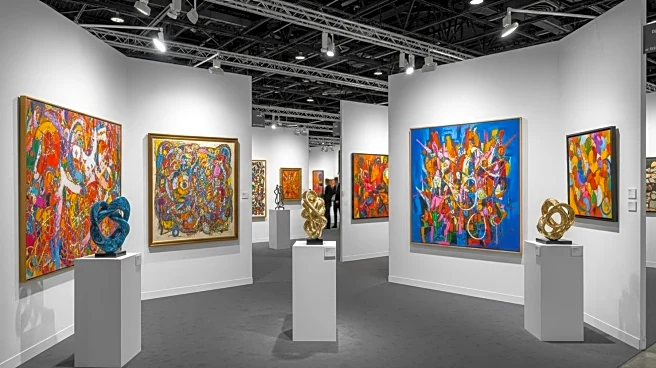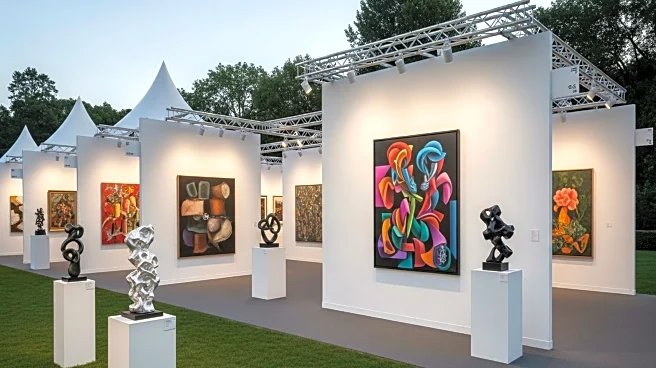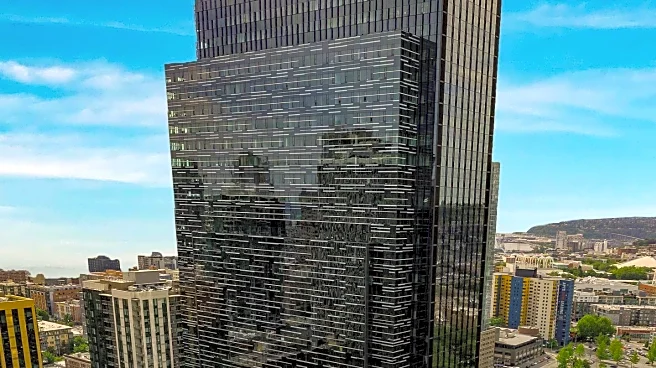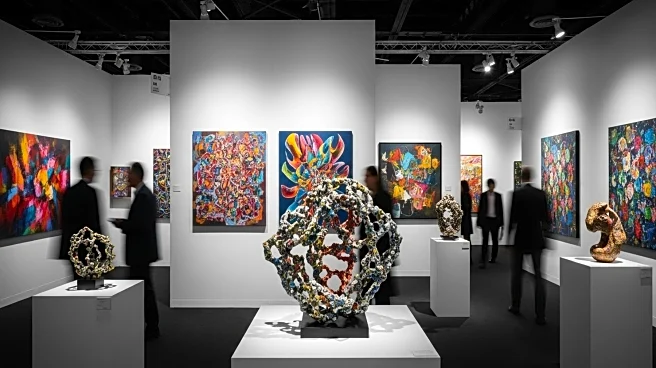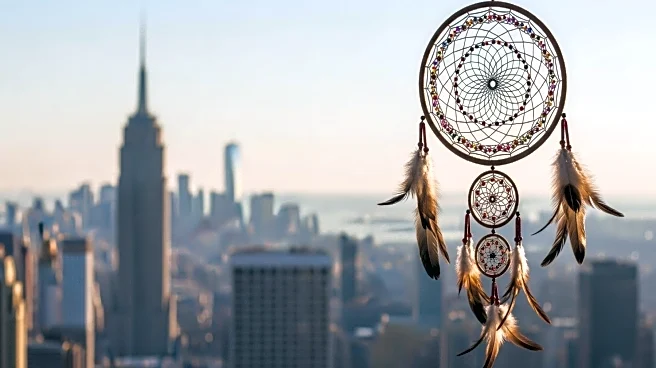What's Happening?
A new trend in the art world is emerging as dealer-run art fairs are gaining traction, offering more affordable options for small and midsize galleries. Notable examples include Post Fair in Los Angeles and Esther in New York, with participation costs ranging from $2,500 to $6,500. These fairs are organized by gallerists themselves, providing a more accessible platform for galleries that have traditionally struggled with high costs and thin margins. This fall, similar initiatives are expanding, with events like BravinLee’s Stay Frosty in Harlem and Bill Powers’s revived Upstairs Art Fair. The proliferation of these small-scale ventures is reshaping the satellite fair landscape, offering new opportunities for galleries to showcase their work without the financial burden of larger, more established fairs.
Why It's Important?
The rise of dealer-run art fairs represents a significant shift in the art market, potentially democratizing access for smaller galleries and artists. By reducing participation costs, these fairs allow galleries with limited budgets to reach new audiences and expand their market presence. This trend could lead to increased diversity in the art world, as more artists and galleries gain visibility. Additionally, the success of these fairs may encourage other sectors to explore similar models, fostering innovation and competition. The impact on the traditional art fair model could be profound, as established fairs may need to adapt to remain relevant and competitive.
What's Next?
As dealer-run art fairs continue to gain popularity, it is likely that more galleries will explore this model, leading to further expansion and diversification of the art fair landscape. Established fairs may respond by adjusting their pricing structures or offering new incentives to attract participants. The art community will be watching closely to see how these changes affect the market dynamics and whether they lead to lasting shifts in how art is bought and sold. Additionally, the success of these fairs could inspire similar initiatives in other creative industries, potentially leading to broader changes in how cultural events are organized and funded.
Beyond the Headlines
The emergence of dealer-run art fairs also raises questions about the sustainability and long-term viability of this model. While lower costs are attractive, organizers must ensure that these fairs maintain high standards and offer value to participants and visitors. The success of these fairs could also influence the perception of art as a commodity, as more accessible platforms may alter the traditional exclusivity associated with art fairs. Furthermore, the shift towards smaller, more intimate events may impact the cultural significance of art fairs, as they become more community-focused and less commercialized.

